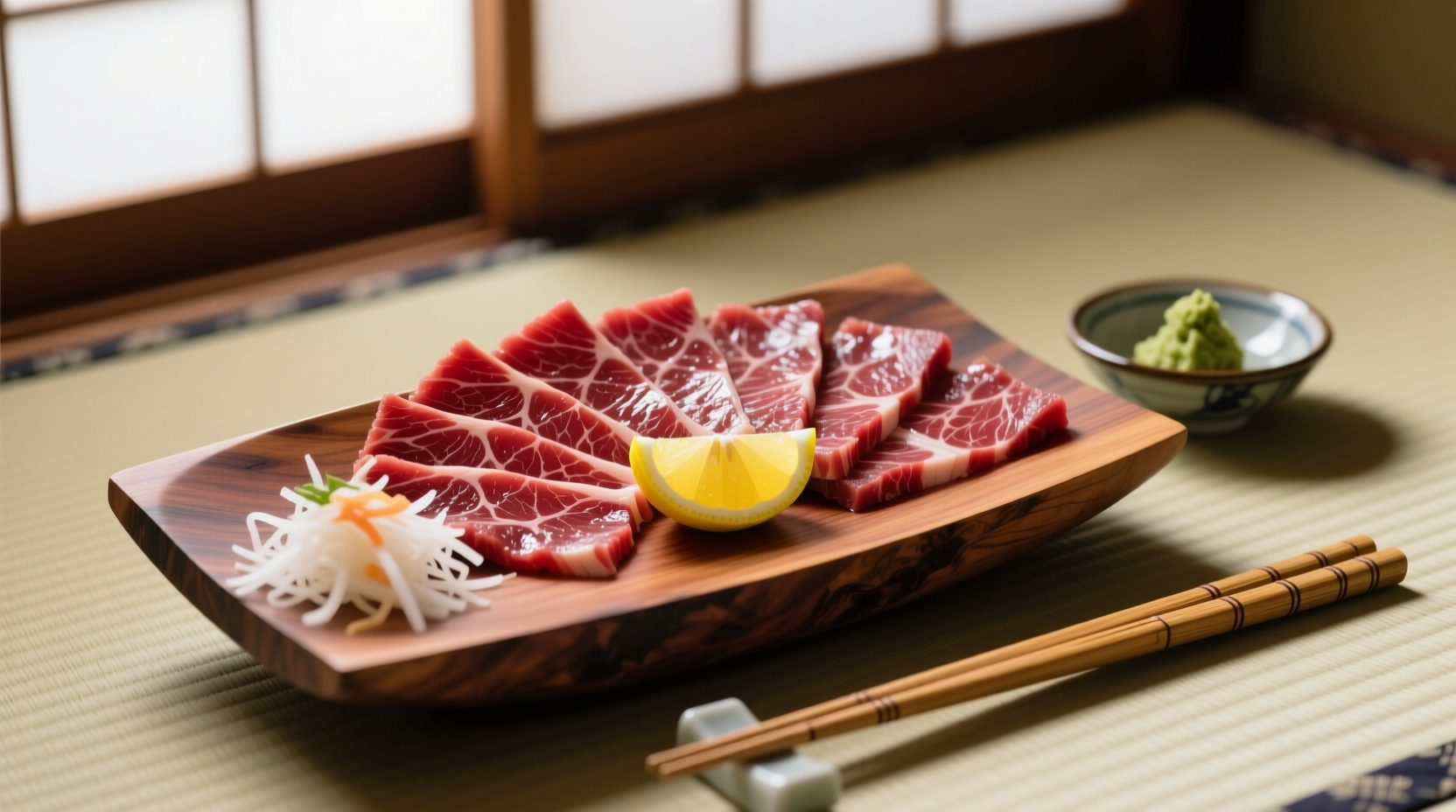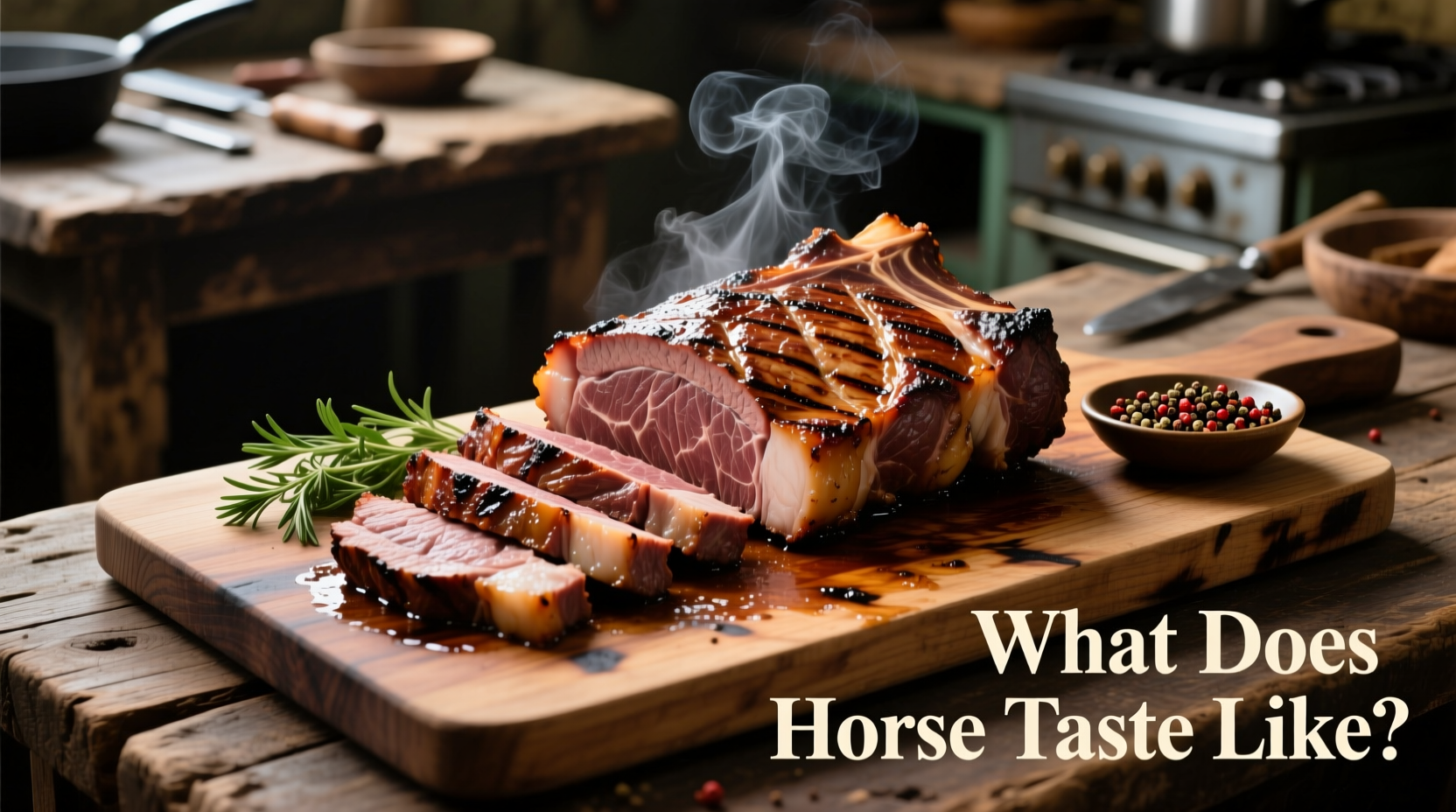If you've ever wondered what does horse taste like, the answer is clear: horse meat has a sweet, slightly gamey flavor profile that's leaner and more tender than beef, often compared to a cross between beef and venison. The taste varies based on the animal's age, diet, and preparation method, with younger horses producing milder, more tender meat.
Curiosity about what horse meat tastes like isn't just culinary speculation—it's a question with deep cultural roots across continents. While controversial in some Western countries, horse meat has been part of human diets for millennia and remains a staple in many cultures worldwide. Understanding the flavor profile of horse meat requires examining both sensory characteristics and cultural contexts that have shaped its consumption.
Understanding Horse Meat's Flavor Profile
When describing what horse meat tastes like compared to beef, professional tasters consistently note several distinctive characteristics. The meat's deep red color hints at its rich flavor profile, which food scientists attribute to higher myoglobin content than traditional red meats.
Horse meat's unique taste emerges from the animal's physiology and diet. Unlike cattle raised specifically for meat production, horses typically have more varied diets and exercise patterns that affect muscle development and fat distribution. This results in meat that's:
- Sweeter than beef due to glycogen conversion during processing
- Leaner with less marbling but comparable tenderness
- Slightly gamey but milder than venison or elk
- Rich in iron, contributing to its distinctive metallic note
The preparation method significantly influences how horse meat tastes when cooked. Quick searing preserves its delicate texture, while slow cooking methods enhance its natural sweetness. Chefs in countries where horse meat is traditional often use techniques that highlight its unique qualities without overwhelming its subtle flavor.
| Meat Type | Flavor Profile | Fat Content | Texture |
|---|---|---|---|
| Horse | Sweet, slightly gamey, rich in iron | 1-2% (very lean) | Fine-grained, tender |
| Beef | Robust, umami, sometimes grassy | 5-10% (varies by cut) | Firmer, more fibrous |
| Venison | Strongly gamey, earthy | 2-3% (lean) | Firmer, can be tough |
| Bison | Sweeter than beef, mild gameiness | 2-4% (leaner than beef) | Softer than beef, fine texture |
Nutritional Benefits of Horse Meat
Beyond what horse meat tastes like, its nutritional profile makes it an interesting dietary option. According to USDA food composition data, horse meat contains:
- Approximately 20% more protein than beef per serving
- Lower saturated fat content (1-2% compared to 5-10% in beef)
- Higher concentrations of omega-3 fatty acids
- Rich in iron, zinc, and B vitamins
The USDA FoodData Central database confirms that horse meat's nutritional composition makes it one of the leanest red meats available. This nutritional advantage explains why it's sometimes recommended for athletes and those seeking high-protein, low-fat dietary options in countries where consumption is accepted.
Cultural Context of Horse Meat Consumption
Understanding why people eat horse meat requires examining its historical and cultural significance across different regions. Anthropological research shows horse consumption dates back to Paleolithic times, with evidence of ritualistic horse meat feasts found in archaeological sites across Eurasia.
Today, horse meat remains part of traditional diets in numerous countries:
- Japan: Basashi (raw horse meat) is considered a delicacy, particularly in Kumamoto
- Kazakhstan: Kazy (horse sausage) features prominently in traditional celebrations
- France and Belgium: Boucheries chevalines (horse butcher shops) operate legally
- Northern Italy: Pastissada de caval is a traditional horse meat stew
The Food and Agriculture Organization of the United Nations documents how cultural attitudes toward horse meat vary dramatically. In some societies, horses represent status symbols or working partners, making their consumption taboo, while in others they've always been viewed as a food source.

Cooking Techniques for Horse Meat
When exploring how to cook horse meat properly, culinary experts emphasize techniques that preserve its delicate texture and sweet flavor. Because of its leanness, horse meat cooks faster than beef and requires careful temperature control.
Professional chefs recommend:
- Marinating with acidic ingredients to enhance tenderness
- Quick searing at high heat followed by moderate oven finishing
- Avoiding overcooking as it becomes tough beyond medium-rare
- Pairing with sweet elements like fruit reductions that complement its natural sweetness
In Japan, where what raw horse meat tastes like is appreciated as a delicacy, basashi is served thinly sliced with ginger and soy sauce. The meat's freshness is paramount, with strict temperature controls ensuring food safety while preserving its unique texture.
Legal and Safety Considerations
Before considering where to buy horse meat legally, it's essential to understand the regulatory landscape. According to the USDA Economic Research Service, horse meat consumption faces significant legal barriers in the United States, where Congress defunded federal inspections of horse slaughter facilities in 2011.
Food safety considerations include:
- Ensuring proper veterinary oversight and inspection
- Understanding medication history (horses often receive drugs not approved for food animals)
- Verifying legal status in your jurisdiction
- Following standard food safety practices for raw meat handling
The European Food Safety Authority maintains strict guidelines for horse meat production, requiring detailed documentation of each animal's medical history to ensure consumer safety. This regulatory framework supports the legal horse meat markets in countries like France and Belgium.
Addressing Common Misconceptions
Many questions about is horse meat safe to eat stem from misconceptions about its preparation and regulation. When properly handled and inspected, horse meat poses no greater risk than other red meats.
Cultural anthropologists note that attitudes toward horse meat often reflect deeper societal values rather than objective assessments of the meat itself. The National Center for Biotechnology Information published research showing how food taboos frequently develop around animals that serve multiple roles in society—both as companions/workers and potential food sources.
Understanding these cultural dimensions helps explain why why horse meat is banned in some countries while being celebrated in others, regardless of its actual taste characteristics.
Conclusion: A Balanced Perspective on Horse Meat
Exploring what horse meat actually tastes like reveals a complex story that extends beyond simple flavor description. It connects us to historical food practices, cultural traditions, and contemporary debates about food ethics and sustainability.
While the distinctive sweet, slightly gamey flavor of horse meat may not appeal to everyone, its nutritional benefits and culinary potential in appropriate cultural contexts make it worthy of objective consideration. As with any food, understanding its background, preparation methods, and cultural significance enhances our appreciation of its place in global culinary traditions.











 浙公网安备
33010002000092号
浙公网安备
33010002000092号 浙B2-20120091-4
浙B2-20120091-4